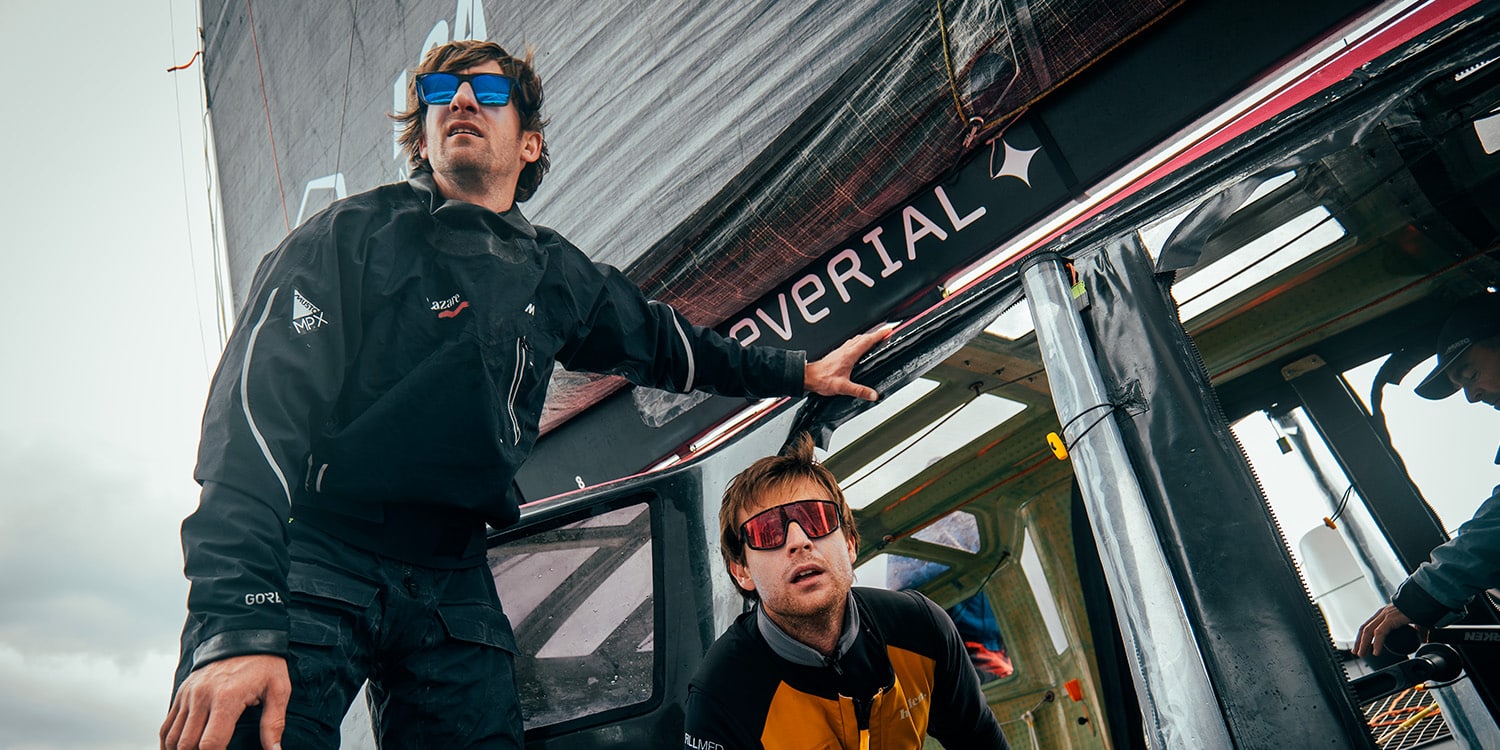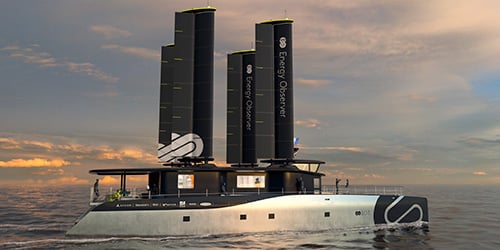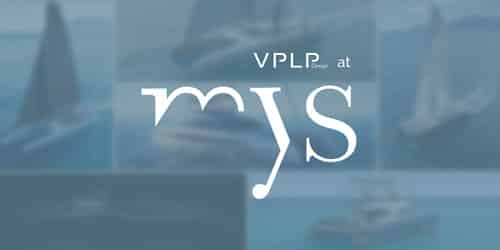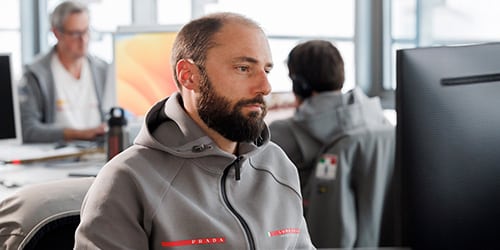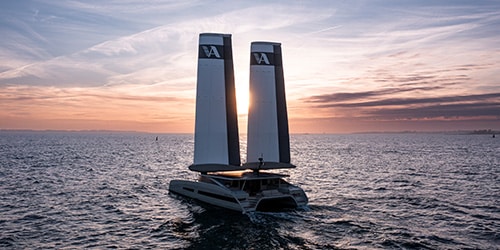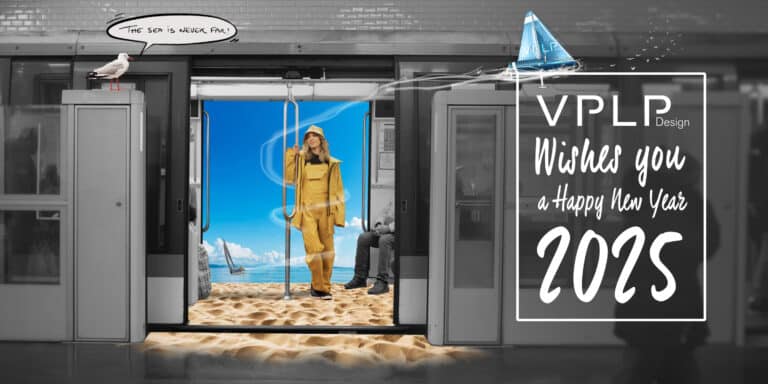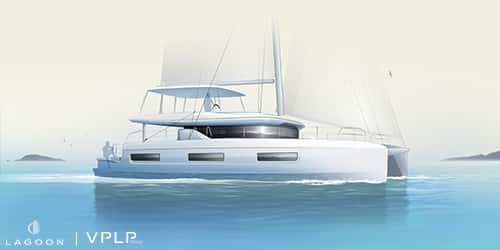Brought up on the water, some are former offshore racers, others are qualified sailing instructors, occasional Mini mariners, wing foiling enthusiasts or just happy to go on a cruise… The vast majority of the VPLP Design team are not only passionate about sailing, they are also active sailors. Some even make it their duty to experience the reality of sailing out on the water, a prerequisite for efficient naval architecture, whether it be for cruising or racing.
“I’ve spent about thirty days at sea since the start of the year, mostly racing. It can be a punishing schedule because you’ve got to keep up with everything happening ashore, but it’s an experience you can’t reproduce elsewhere,” explains Quentin Lucet, Partner Naval Architect at VPLP Design. Recently returned from the Loro Piana Giraglia, the legendary Mediterranean event held in June, Quentin took part in the two inshore legs aboard the 65-foot Maxi Spirit of Lorina which finished second in its category. It’s the architect’s fourth season on the circuit: “Maxis are amazing! These top-tier races have the big guns aboard and involve numerous pros specializing in the very specific issues affecting these boats. For example, you can make three headsail changes in a wind range of only 10 knots.”
The Maxi regatta culture is quite distinct from the solo offshore racing world where VPLP Design established its reputation and developed a large portfolio of customers in the field of competition sailing, but that doesn’t preclude common ground, quite the contrary. “We have developed competencies that can be transposed to these Maxis, particularly in terms of performance analysis and technology,” says Quentin Lucet.. “For example, I helped develop a ballast system on Spirit of Lorina which can transfer 1.4 tonnes of water from one side to the other in 8 seconds. Systems like these have to be carefully thought through. Having used ballast tanks for more than twenty years in the Brittany offshore racing circuit, especially on IMOCAs, allows us to bring a certain understanding to the problem.”

The importance of sailing
to really experience the boats we design

Not all VPLP employees are quite so involved as Quentin in a sailing circuit, but each new iteration of a design is an opportunity for sailing, particularly during sea trials, and this is true for racing as it is for cruising. “We get requests from the teams regularly,” says Xavier Guisnel, Partner Naval Architect at VPLP Design. Xavier has just returned from some exciting sailing aboard Armel Le Cléac’h’s Ultim Banque Populaire XI, in the company of Paul Kerdraon, performance engineer and appendage designer, and Nicolas Baral, structural engineer. “Despite the relentless increase in the quantity of theoretical data, certain sensations are just not reproducible on a simulator. When we’re out on the water, we log copious amounts of data and spend a lot of time observing the appendages through the netting. It’s a watery realignment of theory and reality.”
The teams working in VPLP’s Cruising Division also sail regularly on the boats they design. In addition to the contractual sea trials, which are often too brief to get a feel for the boat, VPLP architects and designers take part in boat deliveries, in particular in preparation for boat shows. This is regularly the case for Lagoon and Outremer boats, such as the recent delivery of a model to Cannes Yachting Festival. Head of division Mathias Maurios recalls crossing the Atlantic in 2003 aboard the first boat he designed for VPLP, the catamaran Coriolan VI. He also sailed in the West Indies and between Antibes and Venice on the 145-foot catamaran Hémisphère. David Mensch made a transatlantic crossing on the latter too.
“It seems to me almost impossible to design boats without actually experiencing them,” explains Mathias Maurios. “That means sleeping aboard, doing the cooking, setting the sails, mooring, swimming, steeping yourself in the interior and exterior layouts, and simply just using the boat. It provides food for thought which can be integrated into future designs.”
Feedback like this is also very important for the architect Antoine Lauriot Prévost who works in VPLP’s Racing Division. “Sailing allows us to maintain a connection with the ecosystem, to spend time with skippers in a setting less formal than a team meeting or videoconference,” says Antoine who has sailed 12,000 nautical miles on IMOCAs (Hugo Boss, TeamWork-Team Snef…) and will be contesting the first leg of the Ocean Fifty Series at Saint-Malo aboard Lazare. “In the heat of the action, we all speak the same language. Not all skippers are trained engineers but they have an excellent feeling for their boats. It’s up to us to seek out the same sensations in order to understand what they are telling us.”

Partnering with F-One

According to Quentin Lucet this design imperative is also dictated by developments in offshore racing which has been experiencing “a real disruptive innovation over the last ten years with the advent of foiling. Take-off speed, water entry, stability management and trimming are constantly evolving factors and you need to get out on the water if you want to keep up!” This necessity of being up to date or simply enjoying being out on the water explains why foiling water sports, especially wing foiling, are so popular with VPLP’s team.
This led to a collaboration with foiling accessories manufacturer F-One, which supplies VPLP Design with equipment in exchange for CFD calculations on their foils. “It’s a win-win situation for both parties: the water sports garage is well stocked and guarantees immediate thrills!” says Xavier Guisnel.
Many people working at the firm enjoy cruising under sail. “Quite a few of us either own a boat or charter one,” says Mathias Maurios. “For example, Guillaume Rey has chartered Lagoons for several years and out of all the employees has probably sailed the brand the most!” There’s nothing like real-world experience to provide clarity and focus when designing the next generation in the range.
